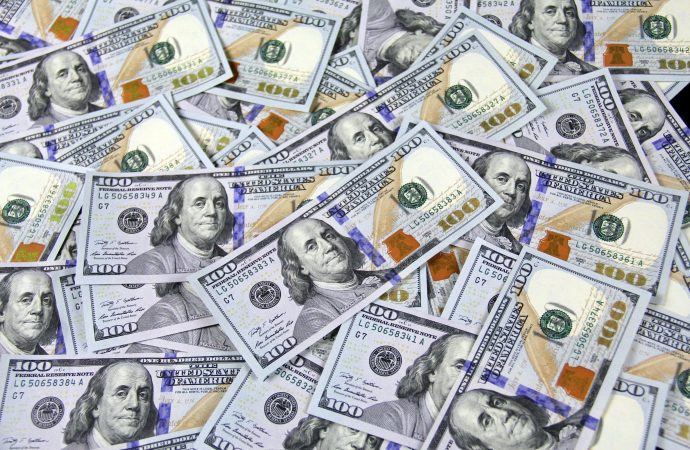The global financial crisis of 2008 exposed the fragility of our banking system and demonstrated the pivotal role that central banks play in stabilizing economies amidst market turmoil. In recent years, we’ve seen a flurry of bank bailouts and bankruptcies, highlighting the need for stronger policymaking by regulatory bodies like the Federal Reserve. But what
The global financial crisis of 2008 exposed the fragility of our banking system and demonstrated the pivotal role that central banks play in stabilizing economies amidst market turmoil. In recent years, we’ve seen a flurry of bank bailouts and bankruptcies, highlighting the need for stronger policymaking by regulatory bodies like the Federal Reserve. But what does this mean for us as consumers? How can we ensure that our money is safe in an ever-changing financial landscape? Join us as we explore the case for stronger Fed policymaking amidst banking turmoil and unpack what it means for you.
The banking industry in the United States is in turmoil
The banking industry in the United States is in turmoil. From bailouts to bankruptcies, the past decade has been a roller coaster ride for the American banking system. And while the Federal Reserve has taken steps to stabilize the industry, many experts believe that stronger Fed policymaking is needed to prevent future banking crises.
The roots of the current banking turmoil can be traced back to the financial crisis of 2008. In the wake of that crisis, many banks were bailed out by the government, while others went bankrupt. The aftermath of the crisis also saw a wave of new regulations being imposed on the banking industry, which made it more difficult for banks to operate and make profits.
In recent years, we’ve seen a number of big banks run into trouble again. This time around, it’s not necessarily because of bad loans or risky investments, but rather because of new challenges that have arisen from changes in technology and consumer behavior. For example, many customers are now using mobile payments instead of cash or checks, which has led to a decline in revenue for banks. At the same time, online lenders are providing stiff competition for traditional banks by offering lower interest rates and fewer fees.
As a result of these challenges, a number of major banks have announced layoffs or branch closings in recent months. And while the stock prices of some banks have recovered somewhat from their lows during the financial crisis, they are still well below their pre-crisis levels.
The current situation represents
The Federal Reserve has been bailouts and bankruptcies
The Federal Reserve has been bailouts and bankruptcies throughout its history. Here are some of the most notable cases:
– The Savings and Loan Crisis of the 1980s: The Federal Reserve bailed out numerous savings and loan associations during this time.
– The Enron Scandal: The Federal Reserve helped Enron Corporation obtain emergency loans during its bankruptcy proceedings.
– The Lehman Brothers Bankruptcy: The Federal Reserve refused to bail out Lehman Brothers, resulting in its collapse.
– The AIG Bailout: The Federal Reserve provided a $182 billion bailout to American International Group (AIG) during the financial crisis.
The case for stronger Fed policymaking amidst banking turmoil
The case for stronger Fed policymaking amidst banking turmoil is twofold. First, the current system fails to protect taxpayers from footing the bill for bank bailouts. Second, the lack of strong policymaking has led to a series of financial crises that have hurt the economy and cost American jobs.
In 2008, the U.S. government bailed out several large banks with taxpayer money. This was done in order to prevent these institutions from failing and causing an even bigger economic crisis. However, this created a moral hazard, wherein banks know that they can take risks without consequence because the government will always bail them out. This has resulted in a number of financial crises over the years, including the most recent one in 2020.
In order to protect taxpayers and prevent future financial crises, the Fed needs to implement stronger policymaking measures. One way to do this is by increasing capital requirements for banks. This would make it more difficult for them to take on excessive risk, as they would need to hold more capital in reserve in case of losses. Another measure would be to introduce stricter regulation of shadow banking activities. Shadow banking refers to financial activities that take place outside of traditional banking channels and are not subject to the same regulations. These activities can often be highly risky, and their unregulated nature was a major contributing factor to the 2008 financial crisis. By introducing stricter regulation of shadow banking, the Fed can help reduce risk-taking and prevent future crises.
The impact of stronger Fed policymaking on the banking industry
In the wake of the 2008 financial crisis, the Federal Reserve took unprecedented actions to stabilize the banking system and prevent a complete collapse of the economy. Now, as the Trump administration looks to unwind some of those policies, there is growing concern that the Fed is losing its ability to effectively regulate the banking industry.
The Dodd-Frank Act, passed in 2010 in response to the financial crisis, gave the Fed additional powers to supervise banks and other financial institutions. But since then, several major banks have failed despite these extra measures. In 2017, for example, four large banks – Wells Fargo, Citigroup, JPMorgan Chase, and Bank of America – were each fined a record amount by the Fed for violating consumer protection laws.
And just this month, two more banks – Deutsche Bank and Credit Suisse – announced they are scaling back their operations in the US due to increased regulation. This comes as no surprise to many observers, who have long argued that the current regulatory regime is too burdensome for banks and ultimately hurts consumers by limiting competition and innovation.
So what does all this mean for the future of banking? It’s still too early to tell, but it’s clear that stronger Fed policymaking is needed to ensure that banks can operate safely and soundly without putting taxpayers at risk. Otherwise, we may see even more bailouts and bankruptcies in the years ahead.
Conclusion
In conclusion, the Federal Reserve’s policymaking has been put to the test during times of banking turmoil and has come up short. We need stronger policies that focus on protecting consumers from bank bailouts and preventing further economic crises due to bankruptcies. The US needs a better approach to handling financial crises in order for us to have sustained economic growth and stability. With proper regulation, oversight, and implementation of strong Fed policies, we can safeguard our economy while also providing relief to individuals affected by such events.





















Leave a Comment
Your email address will not be published. Required fields are marked with *